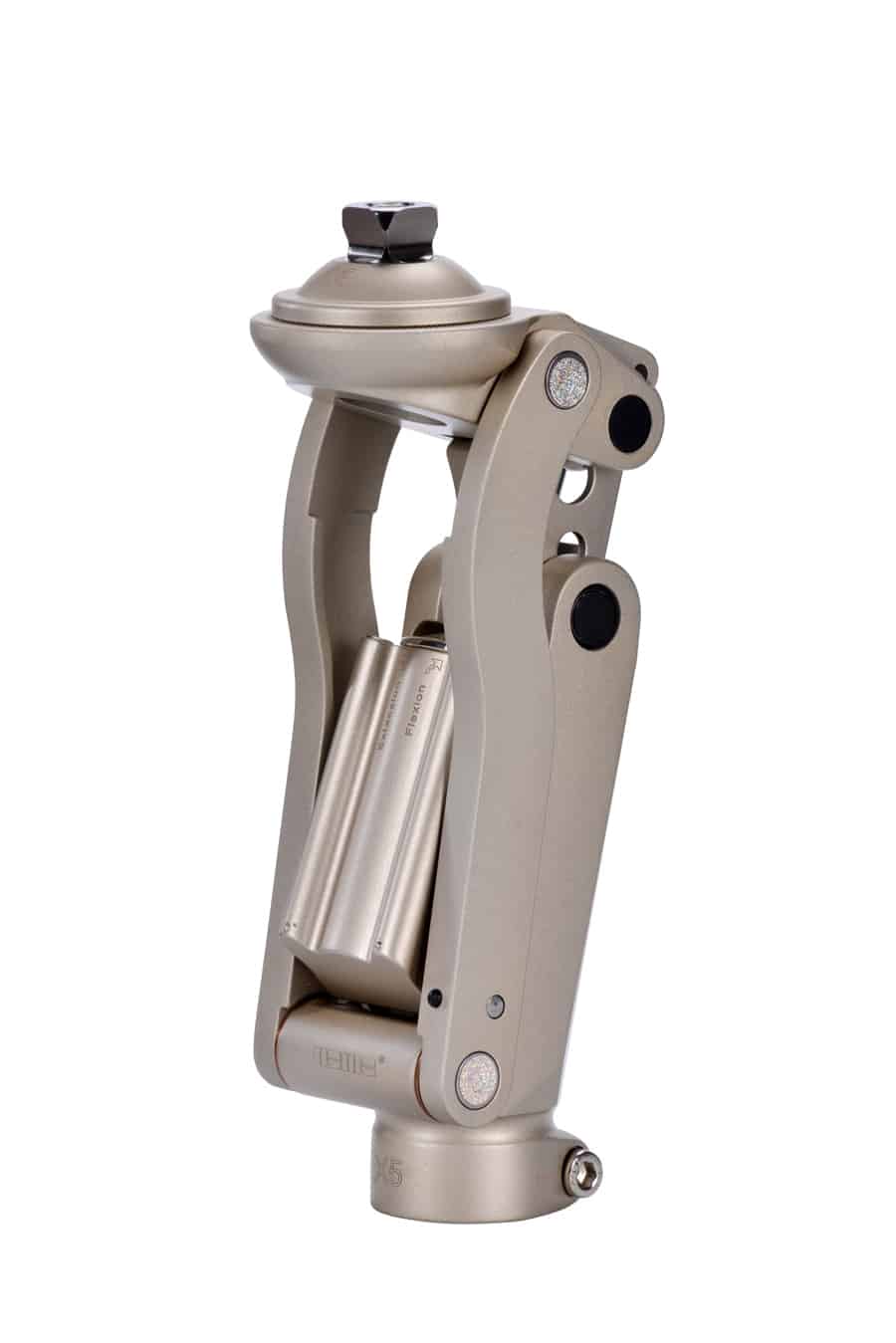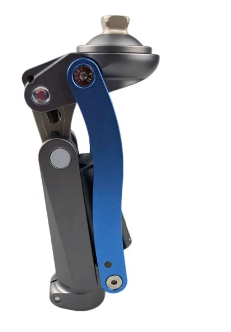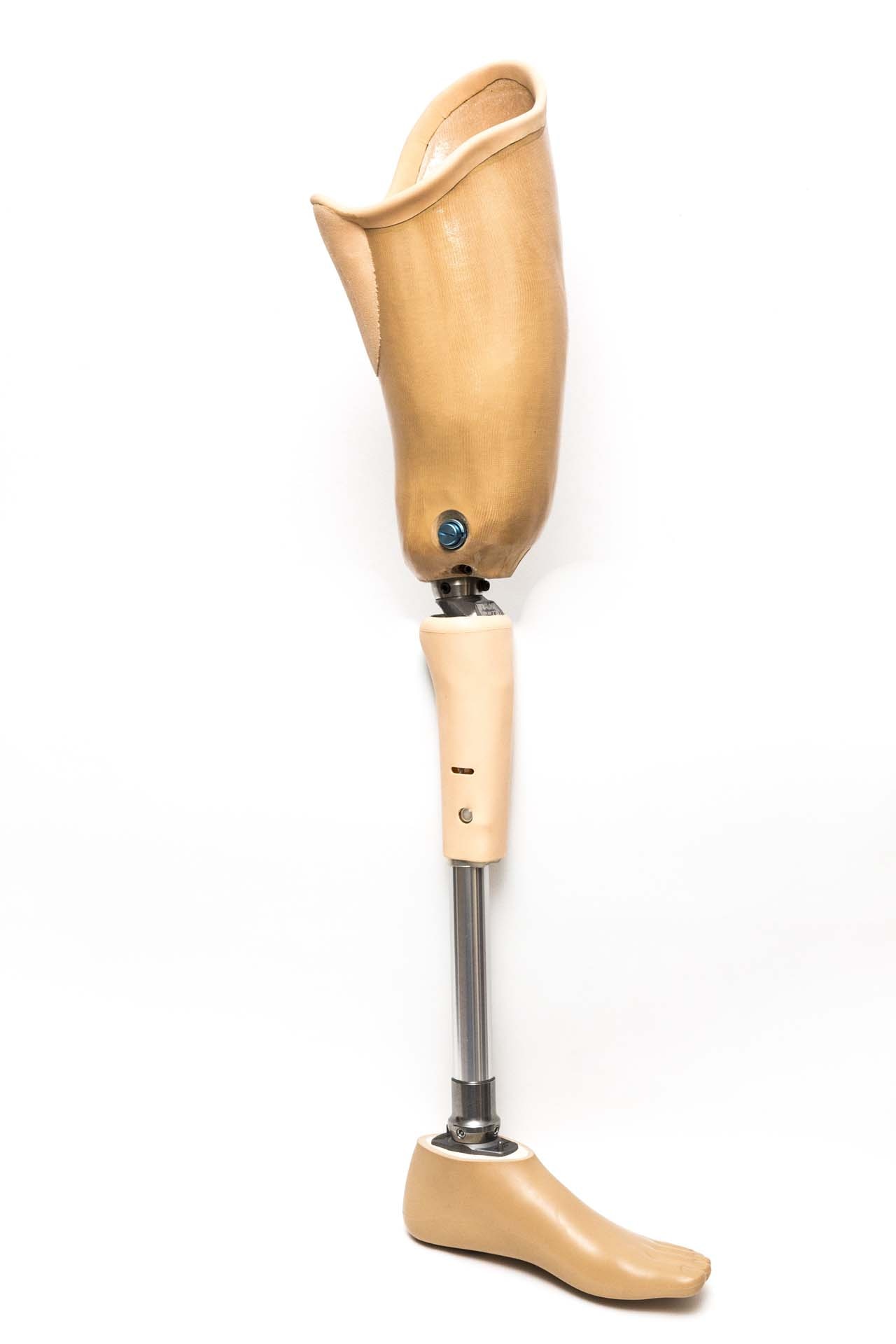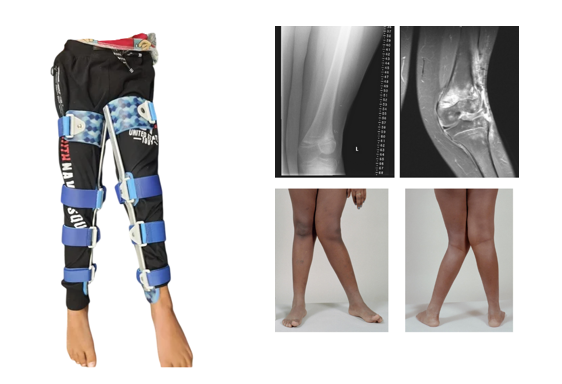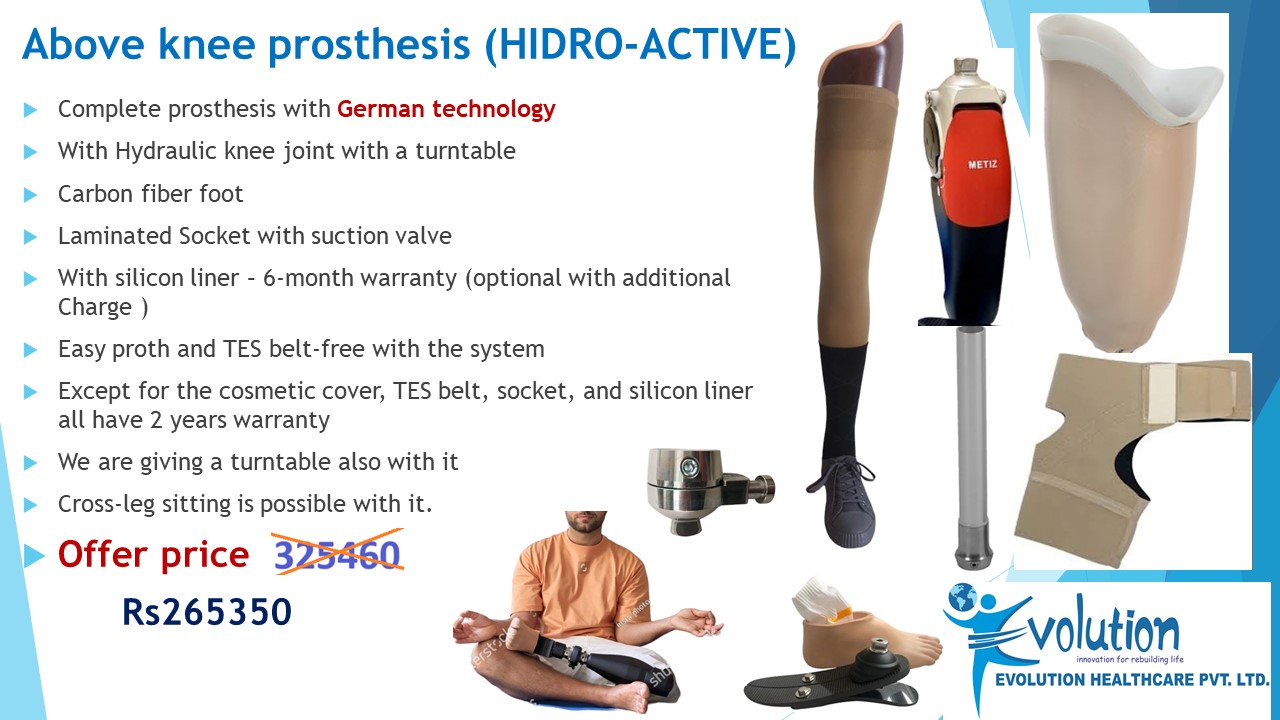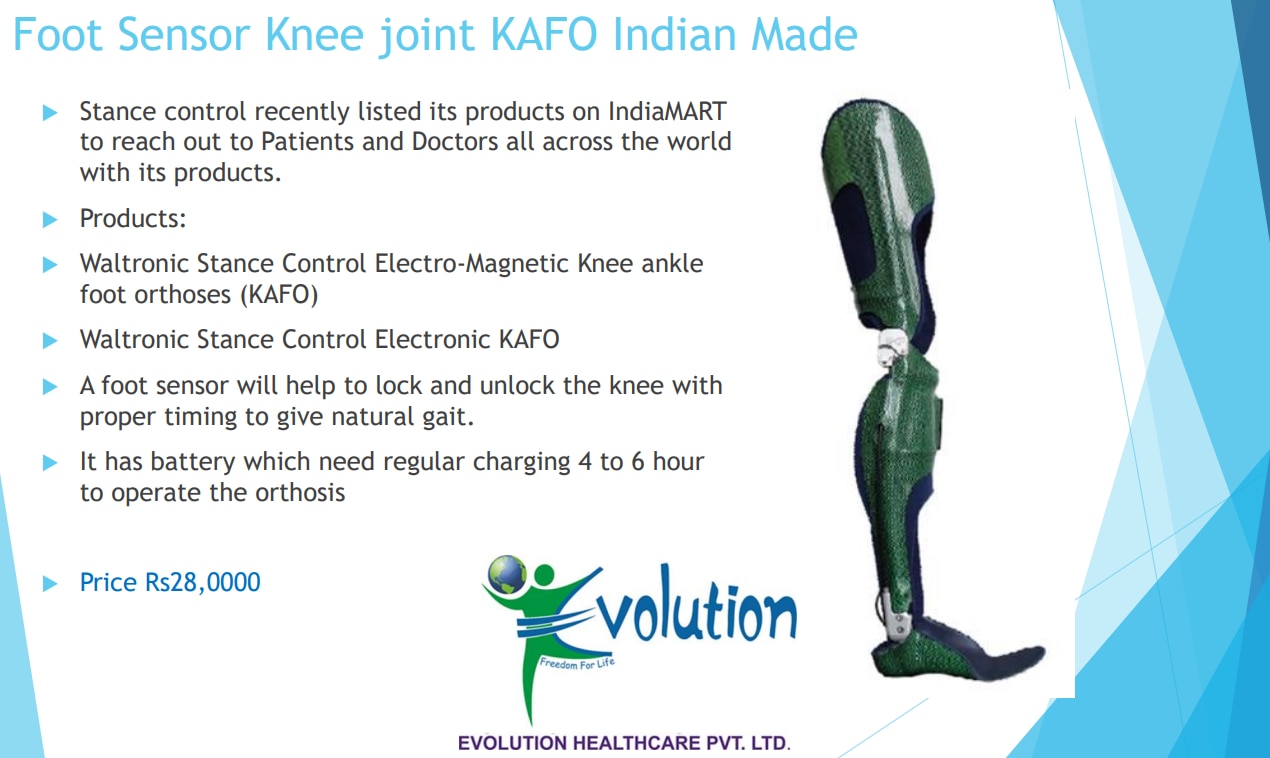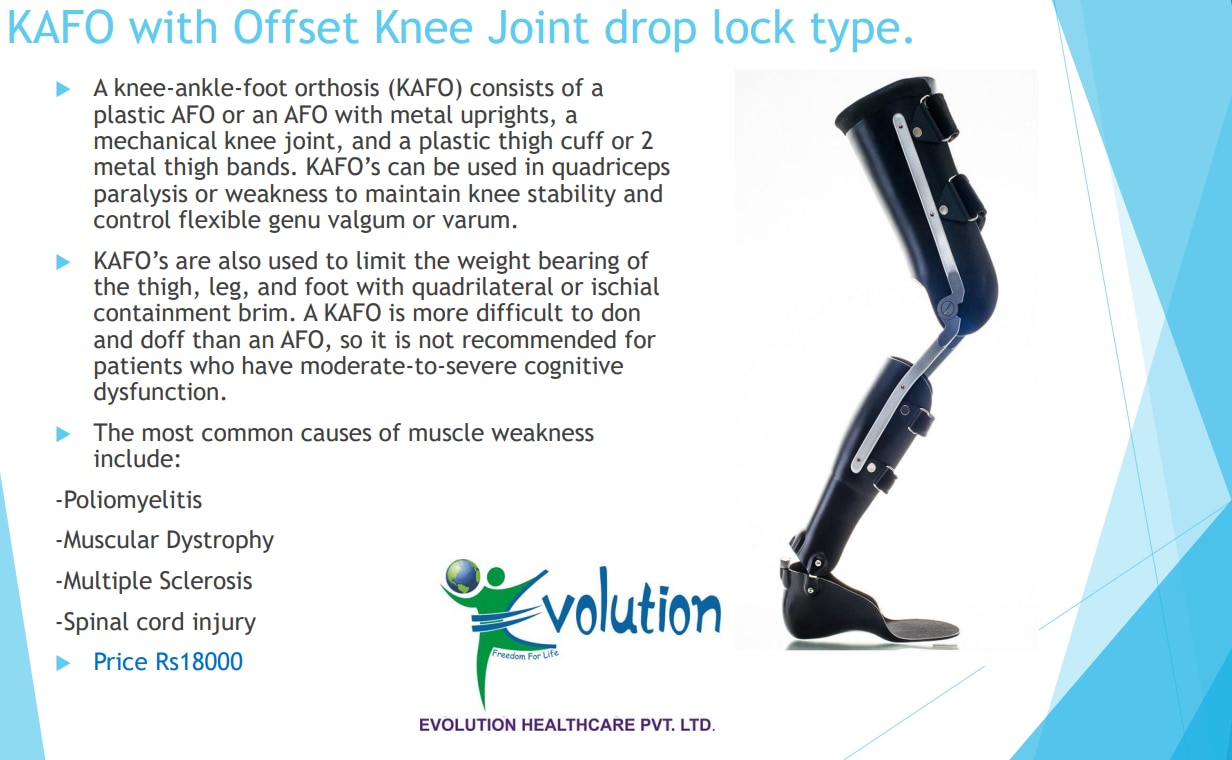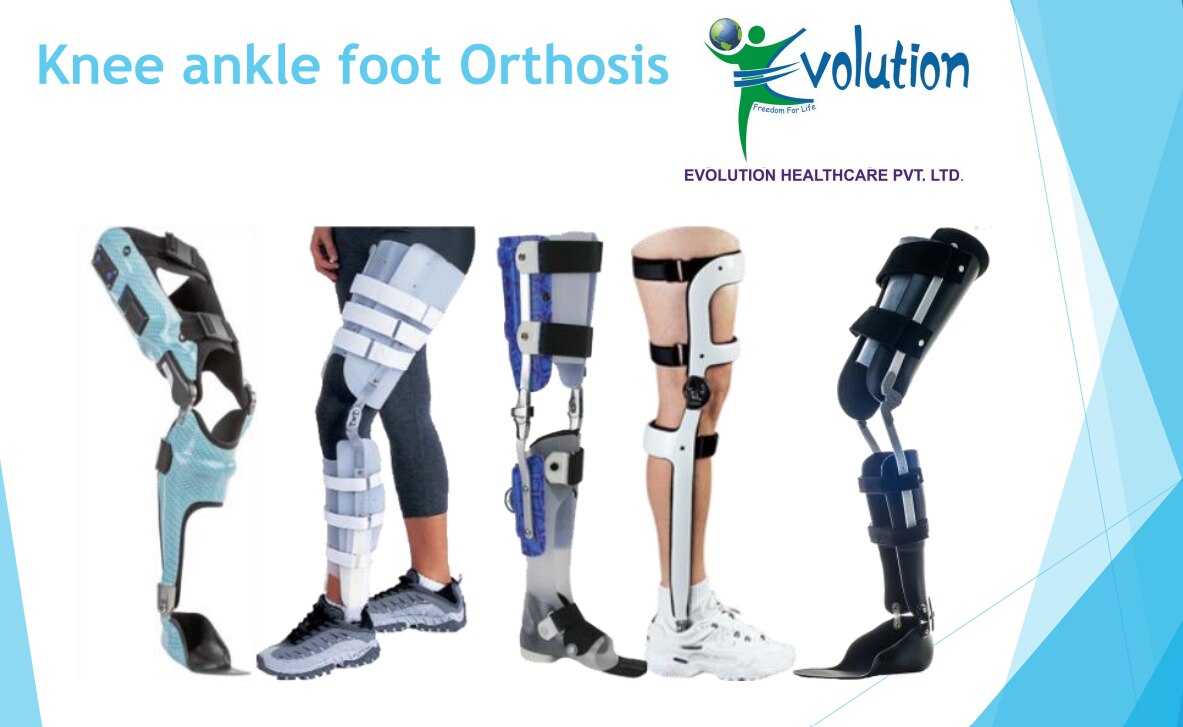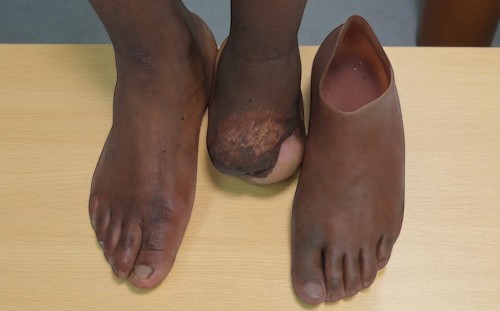A prosthetic knee joint is an artificial knee replacement that is used to replace a damaged or diseased knee joint. It is designed to mimic the natural movement and function of a real knee joint, allowing individuals to walk and perform other activities with greater ease and comfort. Prosthetic knee joints come in various types, including total knee replacement (TKR) and partial knee replacement (PKR). In a TKR, the entire knee joint is replaced with an artificial implant, while in a PKR, only the damaged or diseased portion of the knee is replaced. The materials used in prosthetic knee joints are typically made of metal, plastic, or ceramic components, and are designed to be durable and long-lasting. The success of the surgery and the longevity of the implant depends on several factors, such as the patient's age, weight, and overall health, as well as the skill of the surgeon performing the procedure. Physical therapy and rehabilitation are often necessary after a prosthetic knee joint surgery to help the patient regain strength and mobility in the affected leg.

